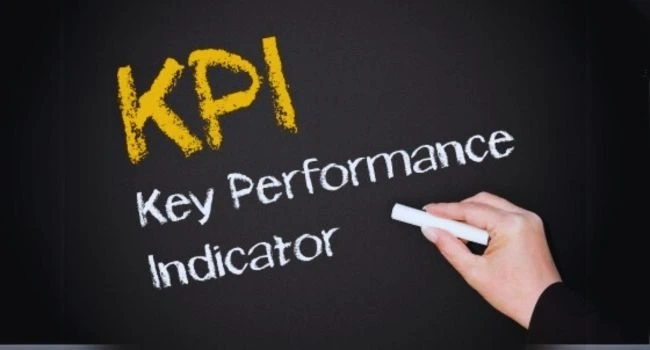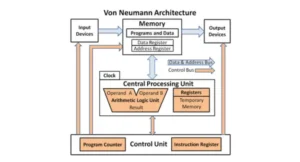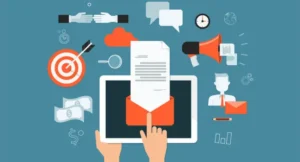For firms, email marketing is a very effective strategy. It facilitates consumer interaction and increases product sales. It’s crucial to know how well your emails function. You can see exactly what’s happening with your messages with email marketing analytics. KPIs for digital marketing are similar to customized report cards for your emails.
You can determine whether your emails are being read and appreciated by using these email performance measures. You can see what works and what doesn’t with their help. Businesses can make better decisions by examining these figures. They can improve their email messages and get better results. Tracking these key details is like having a secret map to successful marketing.
What Are Email Marketing KPIs?
KPIs for email marketing are unique figures that give companies insight into how well their emails are doing. For marketing messaging, these email engagement indicators are similar to personal report cards. Metrics from automation of marketing reveal just how users respond to emails.
Consider keeping tabs on the number of individuals that click, read, and open your emails. These KPIs let you know whether your communications are engaging or uninteresting. They assist companies in identifying what works best. Businesses can find out if their emails are increasing sales. They can improve the effectiveness and intelligence of their email marketing by keeping an eye on these figures.
Why Email Marketing KPIs Are Important
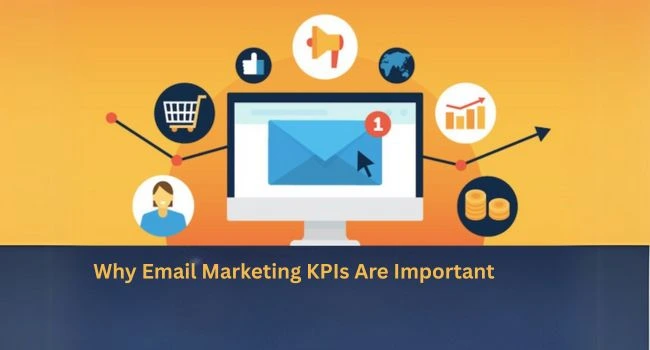
Businesses must comprehend the effectiveness of email marketing. Key performance indicators (KPIs) are akin to specialized instruments that assist businesses in gauging the impact of their emails. These figures provide insight into the email marketing strategy’s strengths and weaknesses.
These KPIs help businesses make informed decisions. They can check if their emails are being read. They can learn which messages excite their customers. These figures assist businesses in refining their email strategies. They get better at crafting messages that readers will want to read.
Businesses can save money by keeping an eye on these unique statistics. They may ensure that their emails are contributing to their development. It is like to having a magic map that pinpoints the preferences of customers.
How Email Marketing KPIs Help Improve Performance
For businesses, email campaign optimization is a superpower. Best practices for email marketing aid businesses in better understanding their interactions. Measuring performance provides valuable insights into client preferences.
Astute businesses meticulously review their email addresses. They search for areas where their messages are weak. They then improve the situation. They can discover what makes consumers click and read by experimenting with different email styles. They may create emails that people truly desire to see thanks to this.
Knowing these figures is similar to having a secret road map to client satisfaction.
The Difference Between Email Metrics & KPIs
Email engagement is more than just figuring the figures. Email marketing metrics are like ingredients in a dish. Basic email information is displayed. Email marketing performance reviews help businesses better understand these numbers.
Metrics offer basic data. For example, how many people clicked on an email. KPIs are distinct numbers that show how well something is doing. They help businesses assess whether their emails are helping them achieve important goals. It’s like figuring out how many people actually enjoy eating a cake instead of just how many people see it.
Essential Email Marketing KPIs to Track & Optimize
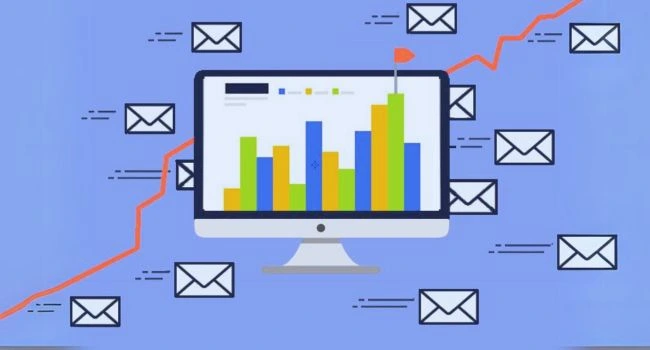
Email marketing can be linked to a great detective game. To find out how engaging their emails are, businesses monitor email open rates and click-through rates (CTR). To ensure that messages are received, they monitor email deliverability.
1. Open Rate – Are People Opening Your Emails?
Consider verifying whether your emails are indeed read. Comparable to a unique spy tool is open rate tracking. Businesses can use it to see how many people click on and view their messages.
How to Calculate Open Rate
For emails, figuring out open rates is similar to solving an entertaining math puzzle. Let’s say you send 100 emails. There are those who open them. Others don’t. Analysis of click-through rates (CTRs) aids in monitoring these figures. The number of emails that were opened is counted. Next, divide that by the total number of emails sent. Divide by 100 to obtain the percentage.
Businesses can use this unique technique to determine the number of people who are reading their messaging. It’s similar to determining the number of students who read the school bulletin.
Why Open Rate Matters
Email message open rates are comparable to a secret score. These figures indicate to firms how engaging their emails are in terms of email marketing strategy. A high open rate indicates that readers are interested in your material. If not many individuals read the email, the subject line may need to be improved.
Consider it similar to the cover of a book. No one will want to read what’s inside if the cover is uninteresting. These figures are used by businesses to add excitement and enjoyment to their communications.
How to Improve Your Open Rate
Special magic words in email subject lines entice readers to read messages. One clever tactic used by companies to increase email opening rates is subject line optimization. Create attention-grabbing subject lines that are succinct and captivating.
Companies also experiment with sending emails at various times. Their goal is to determine the ideal time for consumers to read their communications. It’s similar to figuring out when to tell friends a secret.
2. Click-Through Rate (CTR) – Are People Clicking Your Links?
Comprehending click-through rate (CTR) is similar to becoming a digital communication detective. Finding out how many people find your links intriguing enough to click is the first step in email optimization. Businesses may see what attracts attention by using click-through rate (CTR) analysis.
Consider CTR to be your email links’ popularity contest. Each click functions as a tiny “Hey, this looks cool!” thumbs-up. You may find out what motivates individuals to read more of your material by monitoring these clicks.
How to Calculate Click-Through Rate
Tracking email conversions is similar to solving a basic math problem. Count the number of people who opened your email first. Next, determine the number of people that clicked on the links therein. The number of clicks is divided by the total number of emails sent. Take that figure and double it by 100. This provides you with the proportion of click-throughs.
It serves as a gauge for how engaging your emails are. Consider it your email messages’ report card. People liked what they saw more when the proportion was higher. Businesses can learn more about what customers find interesting in emails thanks to this.
Why CTR is a Key Email Marketing KPI
CTR measures how well your email’s call-to-action (CTA), content, and overall layout work together. A low CTR indicates that, even though your email is being read, it isn’t engaging enough to inspire readers to act.
KPIs for email marketing give companies insight into the effectiveness of their communications. Consider CTR to be your email’s report card. It reveals whether people are genuinely engaged or just looking. A poor click-through rate indicates that there is a problem with the email.
It’s the design that counts. It’s the words that count. The buttons are important. Every element in an email has the power to influence a reader’s decision to click or ignore it. A well-written email piques people’s interest, much like a warm invitation.
8 Ways to Improve Click-Through Rate
- Create clear, persuasive CTAs.
- Keep your email content relevant.
- Use visuals to make the email more engaging.
- Personalize your content for your audience.
- Test different CTAs.
- Add urgency to your offer.
- Make sure links are easy to spot.
- Optimize your email design for mobile devices.
Enhancing call-to-action (CTA) performance is similar to sending out a fantastic invitation to an enjoyable gathering. Your email must have a captivating appearance and a personal touch. Make sure your buttons are visible and unambiguous. Make use of language that entices readers to click.
Consider your audience. What appeals to them? Why are they interested? Include eye-catching images. Ensure that your email appears well on both PCs and phones. Try composing your messages in a variety of styles. Make individuals want to study more by creating a sense of urgency or excitement.
3. Conversion Rate – Are Your Emails Driving Sales?
The conversion rate calculates the proportion of email recipients who complete the intended action, such buying something or completing a form.
Tracking conversion rates is similar to using a specialized business detective tool. Email conversion rate gives businesses insight into whether their messages are effective. Knowing how many individuals really perform the actions you want them to take makes the ROI (return on investment) of emails obvious.
There is a chances to convert readers into consumers with each email. It’s about calculating the number of individuals who read your message and then click, buy, or sign up. The effectiveness of your email is demonstrated by the conversion rate.
How to Calculate Email Conversion Rate
Multiply by 100 after dividing the number of conversions (such as purchases or sign-ups) by the total number of emails sent.
Earning money each email is similar to figuring out a basic math problem. After receiving your email, count the number of people that joined up or made a purchase. Next, determine how many emails you sent in total. Divide the total number of emails by the number of persons who responded. The percentage can be calculated by multiplying that figure by 100.
This technique aids companies in realizing the impact of their emails. It’s similar to counting the number of guests who actually attend a party after receiving an invitation. Your email campaign will be more successful if the percentage rises.
This technique aids companies in realizing the impact of their emails. It’s similar to counting the number of guests who actually attend a party after receiving an invitation. Your email campaign will be more successful if the percentage rises.
Why Conversion Rate Matters for ROI
When your conversion rate is high, it means that your emails are effective in inspiring people to take action. This has a direct effect on your ROI, assisting you in assessing the value of your email marketing investment.
You can use email marketing ROI to see if your lemonade stand is profitable. Your message is effective if recipients read it and take the actions you request. Consider it a report card for your email marketing plan.
Each and every deed matters. When you have a high conversion rate, you can be sure that your emails are motivating recipients to click, make a purchase, or register. It assists companies in determining whether the time and money spent on email marketing is worthwhile.
How to Improve Conversion Rate
- Use strong, clear CTAs.
- Make your offers irresistible.
- Ensure your email leads to a user-friendly landing page.
- Test different email designs to see which works best.
You may increase the impact of your messaging by using email marketing management. Consider it a clever assistant that improves the quality of your emails. Make buttons that are lively and incredibly obvious. Give the impression that your offers are attractive.
Verify that your email directs recipients to an intuitive website. Experiment with different email designs. Find out what motivates people to click and make an order. Making your emails function flawlessly every time is the aim.
4. Revenue Per Recipient – How Much Money Are Your Emails Making?
The amount of money your email campaigns are making for each individual on your list is indicated by revenue per receiver.
For emails, revenue per recipient (RPR) is akin to a money-measuring magic trick. Businesses can better grasp their earning power by looking at revenue per email. Think of every email as a little revenue generator. Certain emails generate more revenue than others.
This indicator demonstrates the potential value of every individual on your email list. It allows you to know which messages are generating the most revenue.
How to Calculate Revenue Per Recipient
Your email campaign’s total revenue is divided by the number of recipients.
Analyzing marketing return on investment is similar to counting the number of candies that each buddy brings to a gathering. Start by totaling the revenue generated by your email campaign. Next, determine the number of recipients of your email. By the number of people, divide the total amount of money.
Businesses may better grasp their email superpowers with help of some easy math. It displays the value of every individual on the email list. Consider it like determining which buddies are the most entertaining during the gathering.
How to Increase Revenue Per Recipient
- Improve your email segmentation to send more personalized offers.
- Use upsell and cross-sell tactics in your emails.
- Run special promotions or discounts to drive sales.
The performance of an email campaign is similar to creating the ideal party playlist. Sort your email list into groups based on shared interests. Send offers that each group will appreciate. Consider it akin to giving each friend a present they truly desire.
Consider selling supplementary things that complement one other. Provide exclusive offers to entice customers to make a purchase. Make marketing campaigns that resemble an enjoyable treasure hunt. Making your emails feel like a customized buying experience is the aim.
5. Deliverability Rate – Are Your Emails Reaching Inboxes?
The delivery rate indicates the proportion of emails that reach recipients’ inboxes rather than their spam folders. Solving email deliverability issues ensures your emails reach the inbox instead of spam folders.
For digital messages, the delivery of emails is comparable to a postal service. Tracking your email delivery rate tells you how many emails actually reach your subscribers’ inboxes. Businesses can determine whether their emails are reaching their intended recipients by looking at the email deliverability rate. Analysis of bounce rates shows how many emails are lost in transit.
Consider it like sending a letter and checking to see if it ends up in the correct mailbox. Similar to letters that may be missed or returned, some emails are blocked or sent to spam.
How to Calculate Deliverability Rate
Multiply by 100 after dividing the number of delivered emails by the number of sent emails.
Counting the number of paper airplanes that really fly across the room is analogous to bounce management. Count the number of emails you send out first. Next, determine the number of emails that truly make it to people’s inboxes. Deduct the emails that are lost or bounce back.
Divide the total number of emails sent by the number of emails that were successful. The percentage can be calculated by multiplying that figure by 100. This indicates the proportion of emails that reach their intended recipient. It’s similar to tracking the progress of your emails.
Why Deliverability Matters for Email Success
Low deliverability means your message might never reach anyone. Spam filters are like tough bouncers at a club; they stop emails that look suspicious or unwanted. Good email practices help your messages pass these digital security checks. The goal is to make sure your important messages actually get seen. If your deliverability rate is low, it means your emails are being blocked or marked as spam, which greatly limits your reach. Email list management is like keeping a clean, well-organized party guest list; when too many emails get blocked, it’s like invitations being thrown away before people can read them.
How to Improve Email Deliverability
Low deliverability means your message might never reach anyone. Spam filters are like tough bouncers at a club; they stop emails that look suspicious or unwanted. Good email practices help your messages pass these digital security checks. A low deliverability rate means your emails are being blocked or marked as spam, which greatly limits your reach. Email list management is similar to maintaining a neat, well-organized party guest list; when too many emails are blocked, it’s like invitations being thrown away before people can read them.
6. Unsubscribe Rate – Are People Leaving Your Email List?
The number of subscribers who choose to unsubscribe from your email list after receiving your campaign is known as the unsubscribe rate.
Monitoring unsubscribe rates is similar to keeping tabs on partygoers who opt to depart early. Reducing the unsubscribe rate aids companies in maintaining a satisfied email audience. Each time someone selects “unsubscribe,” it’s a warning indication that something may be amiss.
Consider your email list to be a private club. You want to ensure that members are happy and don’t want to leave.
How to Calculate Unsubscribe Rate
Multiply by 100 after dividing the quantity of unsubscribes by the quantity of emails sent.
Managing an email list is similar to keeping tabs on partygoers. Determine the number of recipients of your email. Next, determine the number of people who hit the “unsubscribe” button. Divide the total number of emails sent by the number of persons who departed. The percentage can be calculated by multiplying that figure by 100.
Businesses may determine whether customers are enjoying their emails by using this easy math. It’s similar to counting the proportion of partygoers who want to leave early against those who are having a good time and want to stay.
Why Unsubscribe Rate is Important
Subscriber engagement is crucial for any email list. When people start leaving your list, it’s like friends walking away from a conversation. A high unsubscribe rate tells you something might be wrong with your messages. People might not like what you’re sharing. It’s important to pay attention to why subscribers are leaving. Good content keeps people interested. Think of your email list like a garden. You want to grow strong, healthy plants that stay and thrive. Watching your unsubscribe rate helps you understand what your audience wants. It’s a signal that can help you improve your communication. By tracking these numbers, you can make sure your emails are exciting and valuable to the people who receive them.
How to Reduce Unsubscribe Rate
Customizing emails is essential to maintaining subscriber satisfaction. Consider your email list to be a private club where members can receive items that they enjoy. Sorting your subscribers into several groups should be your first step. This enables you to convey messages that are meaningful to each individual. Avoid sending a lot of emails. When there is too much mail in their inbox, people grow weary. It’s similar to receiving too many texts from a friend. When someone chooses to unsubscribe from your email list, find out why. Their opinions are very crucial. It aids in your comprehension of what went wrong. You may get better at sending emails by learning from your failures. Making people eager to see your messaging is the aim. Keep your emails brief, informative, and engaging.
7. Email List Growth Rate – Is Your Audience Growing?
Email list growth helps businesses understand their reach, and subscriber retention is just as important as adding new members. Counting subscribers tells you how many new people join our email community, and tracking these numbers lets you see if people are interested in what you’re sharing. Growing your subscriber list is like planting seeds in a garden.
How to Calculate List Growth Rate
It’s similar to keeping track of how many new acquaintances you create each year to understand your list growth plan. Here’s a quick method to gauge the expansion of your email list. Start by keeping track of the number of new subscribers you acquire. Next, check your current subscription count. The number of new subscribers is divided by the number of current customers. Multiply that figure by 100 after that. This provides you with a percentage that illustrates the rate of growth of your list. For your email community, it functions similarly to a report card. The greater the number, the more successful you are at drawing in new clients. This technique aids companies in determining the effectiveness of their email marketing. It indicates whether readers are interested in your material and would like to hear more from you.
Why List Growth Rate Matters
Businesses can better understand their audience by using email segmentation. More individuals are interested in hearing your message if your list is expanding. It’s similar to meeting new people who are enthusiastic about your common interests. There may be more opportunities with more subscribers. People express interest in your goods or services when they sign up for your email list. Businesses should take note of this growth. It implies that more individuals may purchase your goods. Consider your email list to be an ever-expanding club. Your chances of sharing your great news and offers increase with the number of members you have.
How to Improve List Growth Rate
Increasing the appeal of your email list is the key to gaining new subscribers. Imagine it like starting a club that everyone wants to be a part of. To attract attention, use unique presents known as lead magnets. People are enticed to sign up by these free offers. Post links to your newsletter on social media. This increases the number of people who find your excellent content. Provide fun incentives to entice people to sign up. These could be exclusive savings or cost-free useful materials. Give people the impression that they are receiving something worthwhile. Provide information that piques people’s interest and motivates them to study more. Demonstrating the value of your email list is crucial. Make signing up seem like purchasing a ticket to a unique event.
8. Email ROI (Return on Investment) – Is Your Email Marketing Profitable?
Email marketing is similar to playing a game to make money. You can determine your success with the help of email ROI. Counting your successes and losses is the goal of marketing ROI. Return on investment indicates whether or not your email marketing efforts are yielding results.
How to Calculate ROI
Metrics for email marketing give you insight into the effectiveness of your campaigns. Consider it akin to calculating the proceeds from a school bake sale. Start by calculating the revenue generated by your emails. Next, examine the amount of money you spent on writing and distributing those emails. Deduct the expense from your total earnings. Then, divide that figure by the campaign’s overall budget. This provides you with a unique number that indicates whether or not your emails are profitable. It functions similarly to an email marketing report card. Your emails are performing better if the number is higher.
Why ROI is a Key Email Marketing KPI
Businesses can better understand their success by looking at their email conversion rate. ROI is comparable to a financial scorecard for your email marketing endeavors. It lets you know whether your emails are profitable or not. A positive return on investment indicates that you are making more money than you are spending. Imagine it as a piggy bank that fills up with every email campaign. Effective emails generate more revenue than they cost to produce. This aids companies in determining the effectiveness of their marketing. It’s a significant figure that demonstrates the worth of your email approach. You may determine whether your communications are assisting in the expansion of your company by monitoring ROI.
How to Improve Email ROI
A good email content strategy is essential to improving the effectiveness of your messages. Consider your emails to be a treasure map that directs customers to make purchases. Make your information incredibly useful and engaging. Pay attention to the individuals who are most likely to purchase from you. These are your loyal customers that adore your products. Make an effort to ensure that your emails are received by recipients. Creating messages that email systems want to deliver is what this entails. Increase the number of recipients who open and read your emails. Your chances of making a sale increase with the number of people who view your message. Continue experimenting and refining your strategy to increase the effectiveness of your emails.
How to Track & Analyze Email Marketing KPIs
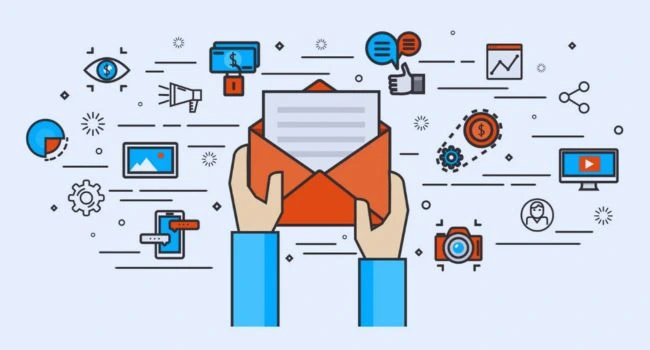
It may be really thrilling to learn about email marketing! Monitoring your email campaigns is like to playing detective and figuring out what makes your communications so appealing to recipients. Businesses can discover the keys to their marketing success with the correct email tracking software. Businesses may learn which messages are most effective by tracking their email campaigns.
You can see the exact performance of your emails by using intelligent email marketing systems. Making better messages that people desire to read is made easier by this. What if you had a magical gadget that could tell you what your consumers truly enjoy?
Selecting the ideal email service provider (ESP) is similar to selecting the most effective super tool for your marketing endeavors. Each ESP has unique capabilities to assist you in monitoring the effectiveness of your emails. Imagine it like a magical dashboard that displays all of your email correspondence.
Constant Contact and Mailchimp are examples of smart assistants for your company. They are able to inform you the number of persons who read your emails. They also display the number of clicks on your links. Certain platforms even provide you with the number of people that read your email and make a purchase.
Finding an ESP that provides you with reports that are easy to read and comprehend is crucial. It ought to make it clear to you what is effective and what need development. This enables you to create more engaging emails.
Set Up Custom Dashboards for KPI Monitoring
Analytics from digital marketing may be your best tool for deciphering email campaigns. Imagine having access to a magical control panel that displays all of your email information in one location. You can see how your email messages work with custom dashboards, which are similar to special windows.
Google Analytics and other similar tools act as extremely intelligent investigators. They keep track of crucial data, such the number of persons who read your emails. They also display the number of clicks on your links. These dashboards make complex information very easy to understand by using charts and colors.
With real-time tracking, outcomes are visible right away. This facilitates prompt decision-making regarding your email marketing. It functions similarly to a real-time score for your email success!
Automate Reports for Better Tracking
Email tracking is made incredibly simple by marketing automation technologies, which are like magical assistants. Consider having a robot helper who generates reports for you without requiring additional effort. Reports can be generated using these technologies on a daily, weekly, or monthly basis. Without having to spend hours personally reviewing every email, they assist you in understanding how well your emails are doing.
HubSpot, Marketo, and other platforms function similarly to smart computers. They automatically gather all of the pertinent data about your emails. These tools help you see what’s working well and show you trends. You can devote more effort to creating fantastic email campaigns and less time to counting figures.
Having an extremely intelligent acquaintance who keeps track of all your email marketing secrets is similar to having automated reporting. They make it easier and faster for you to make wiser selections.
Benchmark Your KPIs Against Industry Standards

Benchmarks for email marketing are similar to report cards in that they display the effectiveness of your communications. Consider evaluating your email performance against that of other companies in your sector. The majority of businesses strive for a 20–30% email open rate. This enables you to determine whether your emails are doing well or require some work.
You can check how you compare with tools from firms like Mailchimp and Campaign Monitor. They serve as unique success indicators for your emails. These tools let you see exactly how your emails stack up against those of other companies in your industry.
You can determine what is effective and what requires improvement by examining these standards. It’s like to receiving a secret road plan for improving your email marketing!
Analyze Campaign Performance & Make Data-Driven Decisions
The effectiveness of your email campaigns is similar to solving a problem regarding your marketing success. Making judgments based on data helps you figure out what makes your emails so effective. Examine crucial hints such as the time you send emails, the subject line you choose, and the length of your message.
You may think of it as your email marketing detective. You’ll find trends that indicate what motivates users to click, register, or make a purchase. In the morning, some emails could function better. Others may require longer or shorter messages.
You can improve your upcoming email campaigns by closely examining these details. It’s similar to having a trade secret for successful email marketing! Every email you send is an opportunity to grow and learn.
Experiment & Iterate – Continuous Improvement for Better Results
In email marketing, A/B testing is similar to a fun science experiment for your communications. To determine whether version of the same email performs better, consider creating two distinct versions. You can experiment with different buttons, images, or subject lines. This aids in your comprehension of what motivates readers and clickers.
Every test is an opportunity to gain new knowledge. Some emails may have intriguing titles that pique readers’ interest. Others may feature eye-catching, bright buttons. You’ll find the magic formula for fantastic emails by experimenting.
Continue to test and get better. With each experiment, your email marketing will improve even more!
How to Improve Your Email Marketing KPIs

Do you want better emails that people will read? Simple adjustments are the first step in optimizing an email campaign. Use these simple suggestions to increase your subscriber retention. Together, we can make the most of your emails!
Write Irresistible Subject Lines to Boost Open Rates
The subject line of your email is similar to the book’s cover. People must be enticed to look inside. Clear and succinct subject lines are ideal. They pique readers’ interest. Personal touches are effective, according to best practices for email subject lines. If you can, try including the reader’s name. Don’t use more than 50 characters in your topic lines. This makes the entire statement more visible. Ensure that the subject line of your email corresponds to the content of the communication. Don’t make unfulfilled promises.
In order to generate excitement, use action words. “Discover,” “learn,” and “save” are examples of attention-grabbing words. To determine what works best, try a variety of topic lines. Keep in mind that the key to increased open rates is a strong subject line. RetryClaude is prone to errors. Please check your answers again.
Improve Email Design & Mobile Optimization
Nowadays, most individuals use their phones to check emails. The impact of your email design is more important than ever. Emails optimized on mobile devices require extra care. Use a lot of white space and keep your design simple. Make use of larger text that is readable on small displays. Make your buttons big enough to tap with your fingertips. Steer clear of small, difficult-to-click links. Opt for single-column arrangements rather than intricate ones. Before sending, test your emails on several devices. For images to load quickly, their file sizes should be modest.
Slow emails are not tolerated by mobile users. Colors should be striking without being blinding. Use headings and brief paragraphs to divide up the text. Don’t forget to prioritize the most important facts. Frequently, mobile readers don’t scroll very far down. More people will read and reply to your emails when they appear excellent on phones. RetryClaude is prone to errors. Please check your answers again.
Segment Your Audience for Personalized Emails
Each individual on your email list is unique. While some people enjoy cooking, others prefer sports. You can categorize people according to their interests by using email segmentation. Sending them emails they genuinely want to read is made possible in this way. Customizing your emails gives each recipient a sense of exclusivity. It’s similar to receiving a letter bearing your name.
You can classify people based on their geography, age, or the products they purchase from you. Sending the appropriate message to the correct person increases the likelihood that they will open it. They may even make a purchase or click on links. Consider how you feel when you receive emails about irrelevant topics. Most likely, you disregard them.
Try simple groupings first and see what works. Making each person feel as though you are speaking directly to them is the aim.
Use A/B Testing to Optimize Email Performance
A/B testing in email marketing helps you compare two email versions to see what performs better. For your emails, A/B testing is similar to a science experiment. It assists you in determining the preferences of your readers. You make a single alteration to two different versions of the same email. You could experiment with alternative subject lines. Alternatively, you might experiment with different button colors or images.
Half of your readers should receive version A, while the other half should receive version B. Then observe which one receives more clicks or opens. You can learn what your readers like from the successful version. This allows you to test several aspects of your email.
Experiment with various transmission times. While some people read their emails at night, others do it in the morning. Check the length of your emails. Examine the text on your buttons. Little adjustments can have a significant impact.
A/B testing eliminates uncertainty in email marketing. It provides you with accurate information about what works. To keep getting better outcomes, make testing a habit.
Enhance Call-to-Actions (CTAs) for Higher Click Rates
There should be a button in your email that instructs recipients on what to do next. We refer to this as a call-to-action, or CTA. Clear phrases like “Buy Now” or “Learn More” are used in effective CTAs. The effectiveness of your call-to-action (CTA) is crucial for obtaining clicks. Make sure your buttons are large and visible. Make use of hues that contrast with the remainder of your email.
Near the top of your email, place your primary call to action. Not everyone scrolls all the way down. Later in the email, you might reiterate your call to action. This allows readers to click once more. Make use of language that conveys urgency or excitement. The phrase “Limited Time Offer” is more effective than simply “Click Here.”
To determine which button color works best, experiment with multiple hues. Additionally, try using alternative words on your buttons. Occasionally, minor adjustments might yield significant outcomes. Make buttons large enough because mobile users tap with their fingers. More people will take the desired action when your calls to action are effective. RetryClaude is prone to errors. Please check your answers again.
Avoid Spam Triggers to Improve Deliverability
Sometimes emails are misplaced and never arrive to the recipient. They are directed to a unique folder known as “spam.” You may find out how many people flag your emails as junk mail by looking at your spam complaint rate. Try to keep this figure as low as you can.
Avoid overusing exclamation points! This appears to be spam. Subject lines shouldn’t be written entirely in capital letters. This irritates email filters. Avoid using terms like “free,” “buy now,” and “cash” excessively. Spam filters may be activated by these.
Verify that people have subscribed to receive your emails. Always provide a simple unsubscribe option. This prevents you from being flagged as spam. Always send emails from the same address. With email providers, this increases confidence.
Before distributing your emails to everyone, test them. Certain email systems can determine whether your message will end up in spam. More people will see and open your emails once they get in their inboxes.
Monitor & Reduce Unsubscribes by Sending Relevant Content
When they receive messages they don’t care about, they unsubscribe from email lists. This is comparable to when a friend discusses topics you find uninteresting. Keeping people interested in what you send them is known as email subscriber engagement. Keep track of the weekly number of people who click the “unsubscribe” button.
Write emails that assist others in resolving issues. Give them advice they can put to use immediately. Find out what subjects they are interested in studying. Fewer people will unsubscribe from your list when you provide helpful information.
Avoid sending too many emails. People can get annoyed by too many texts. Most firms find that once a week is plenty. Check your emails for spelling errors and make sure they appear decent. People depart when the quality is poor.
Send your finest content as soon as someone signs up for your list. This demonstrates to them the value you offer. Retaining subscribers is simpler than acquiring new ones. Make every email worthwhile to read and open.
Common Mistakes That Hurt Your Email Marketing KPIs

Keep a watch out for high bounce rates, monitor the number of unsubscribes, and steer clear of spam filters that prevent your messages. Sending emails that don’t reach people can harm your marketing. RetryClaude can make mistakes, so please double-check responses.
Sending Emails Without Segmentation
Sending the same email to everyone is a big mistake because your readers have different needs and interests. Email list segmentation is the process of grouping your contacts into special groups. If you don’t do this, people may ignore your emails or even click “unsubscribe” because the content isn’t appropriate for them. It’s like giving a child the same toy—some will love it, while others won’t care at all. By segmenting your list, you can send emails that people are actually interested in reading, increasing the likelihood that they will open your messages and click on your links. If you don’t do this, your marketing results will suffer because your messages won’t resonate with readers.
Ignoring Email Deliverability & Spam Filters
Emails sent must arrive in recipients’ inboxes. Spam folders receive a lot of emails. This is a serious issue. Your messages are misplaced. All of your effort is in vain.
Email deliverability is very important. It means how many of your emails actually reach inboxes. You should check this regularly. There are tools that can help you track it.
The rate of spam complaints is also important. When someone flags your email as spam, this occurs. Your transmitting reputation is harmed by high complaint rates. More of your emails will end up in spam bins thanks to email providers.
Make sure your emails are helpful and clear. Avoid using ALL CAPS or a lot of fancy jargon. Only send emails to those who request them. Immediately remove everyone who requests to unsubscribe. Your emails will reach more inboxes if you follow these easy steps.
Not Testing Emails Before Sending
Always check your emails before you send them out. Many people skip this step. This causes big problems. Your emails might look broken on phones or computers. Links might not work. You could have spelling mistakes.
A/B testing email campaigns is very important. This means sending two different versions of your email. You can change the subject line or the pictures. Then you see which one works better. This helps you learn what your readers like.
Testing saves you from embarrassing errors. It helps more people open your emails. Your messages will look good on all devices. Take time to test every email. Your results will improve. Your readers will be happier with what they receive.
Failing to Optimize for Mobile Users
Nowadays, a lot of people use their phones to check emails. On the bus, they check their messages. While they wait in line, they check their emails. People will trash emails that don’t function properly on phones.
These days, mobile-friendly email design is crucial. This entails creating emails that display well on little displays. The size of the text should be readable. Buttons should be easy to tap with a finger. Images ought to load rapidly.
Emails cause issues when they aren’t designed for phones. To read, one must enlarge the image. It is too small to click on links. Pictures may seem excessively huge. Readers become frustrated as a result. They may decide to stop receiving your emails.
Prior to sending, always check how your emails appear on phones. Make sure they load quickly. Messages should be brief and concise. This increases the number of people who read and reply to your emails.
Overloading Subscribers with Too Many Emails
An important mistake is sending too many emails. When their inbox is overflowing with your communications, people become irritated. They may be disturbed. They might hit the unsubscribe button as a result of this.
Retaining subscribers to your email list is known as email subscriber retention. This is crucial for your company. People can continue to receive your news and offers if they continue to subscribe.
Consider how frequently you should send emails. Once a week could work well. It might also be twice a month. Find out what your subscribers would like. Pay attention to what they have to say.
Quantity is not as good as quality. Write informative emails that readers will want to read. Make every communication worthwhile to read. People will be eager to hear from you in this manner. They won’t experience overload. Your company will gain and your email list will remain robust.
Future Trends in Email Marketing KPIs
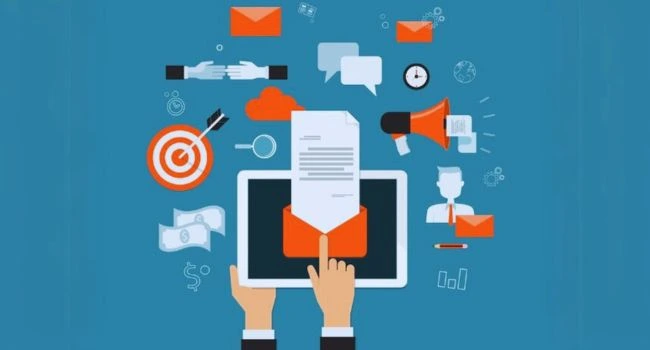
Trends in email marketing are rapidly evolving. Every year, new methods of reaching consumers are developed. We can learn what works best by looking at email campaign insights. Email appears to have an interesting future! Astute businesses keep a close eye on these developments. They improve their techniques to achieve better outcomes. Let’s examine the upcoming developments in email marketing.
AI & Automation in Email Performance Analysis
Emails are being sent in a different way thanks to smart computer programs that can analyze how recipients respond to your messages, identify who opened them, and see which links people clicked on. Marketing automation makes emailing easier, allowing you to schedule emails to send at specific times. The computer remembers each recipient’s preferences and can send different emails to different recipients, making the readers feel special.
As these tools continue to advance, they will be able to determine the optimal time to send emails, assist in crafting more effective subject lines, and even modify the content of emails for individual recipients, saving you time and improving the effectiveness of your emails by increasing the number of recipients who open and read them.
How Privacy Laws (Like GDPR) Affect Email KPIs
The guidelines for sending emails have changed. People’s privacy is protected by these regulations. Regulations such as GDPR require businesses to handle people’s data with care. Before sending someone an email, you must get their consent.
These days, email filtering and spam compliance are crucial. Email service providers verify that your communications adhere to the guidelines. Your emails may end up in the garbage bin if they don’t. There, no one will notice them.
The way we gauge the success of emails is altered by these privacy restrictions. Your list may have fewer individuals. However, these individuals genuinely desire your emails. They are more inclined to click on them and open.
Prior to adding someone to your email list, always get their consent. Explain to individuals how you plan to use their data. Make unsubscribing simple for them. Your emails will reach more inboxes if you abide by these guidelines.
The Impact of iOS 15 & Email Tracking Limitations
With iOS 15, Apple made a significant shift. People’s privacy when reading emails is protected by this adjustment. Nowadays, it’s not always possible to determine whether someone’s iPhone opened your email. Email marketers have an issue with this.
Businesses may see how their emails are doing by using email tracking software. It displays when and who opens emails. It keeps track of the links that users click. However, the new privacy regulations make these technologies less effective than they were previously.
In the past, open rates were crucial. Marketers now have to examine diverse figures. Rather, they have to monitor clicks. The number of people who make a purchase after receiving an email ought to be tracked.
Astute marketers are coming up with new metrics to gauge performance. They concentrate on the actions that people take after reading emails. They examine sales and website traffic. This provides a clearer picture of the effectiveness of emails. To maintain the effectiveness of their email marketing, businesses must adjust to these new regulations.
Interactive Emails & Their Effect on Engagement
Interactive email features make reading emails more enjoyable and less tedious. When subscribers see a video or quiz they can watch or take, they become excited, which increases their likelihood of clicking and engaging with the email. Businesses find that these interactive elements improve the performance of their emails. Interactive emails are revolutionizing the way we connect with readers. These special emails contain entertaining elements like polls, quizzes, and videos that readers can use right in their inbox.
These emails are opened by more people. More people click on the internal links. Rather than feeling stagnant, the experience seems dynamic and captivating. Instead of only using one-way messages, interactive aspects facilitate two-way communication. Stronger relationships between brands and their audience are facilitated by this innovative approach to email design. Subscribers look forward to these dynamic experiences in their mailbox.
How to Use KPI Data for Smarter Email Strategies

Open rates are only one aspect of email success. To enhance outcomes, astute marketers monitor a variety of data. The number of people who click on your email links is shown by your click-through rates. A respectable CTR might be anything between 2 and 5%, depending on your sector. The number of persons who completed your intended activity is indicated by conversion rates.
Email campaigns typically convert between 1 and 3%. Watch your bounce rates too! To guarantee delivery, keep them below 2%.
Knowing these figures helps you increase the performance of your email campaigns. Data-driven choices are the most effective for email marketing campaigns. Consider breaking up your audience into behavioral segments. Try a variety of non-opener subject lines. Content should be improved for people who open but do not click. Your email results can be significantly improved with minor adjustments.
Identifying Weaknesses in Your Email Performance
Is there a problem with your email? To figure out why, you need to measure email performance well. Frequently, low open rates indicate that your subject lines require improvement. Try including the individual’s name. This can increase the number of people who open your email by 26%. Do a lot of folks unsubscribe? It’s possible that you are sending too many emails.
Or perhaps they don’t find your stuff engaging. Not receiving enough clicks? Examine your button that calls for action. It may not be enough obvious. People must be fully aware of their next course of action. The first step in resolving these issues is identifying them. Minor adjustments can have a significant impact on the effectiveness of your emails. Observe your numbers carefully and adjust as necessary.
Aligning Your KPIs with Business Goals
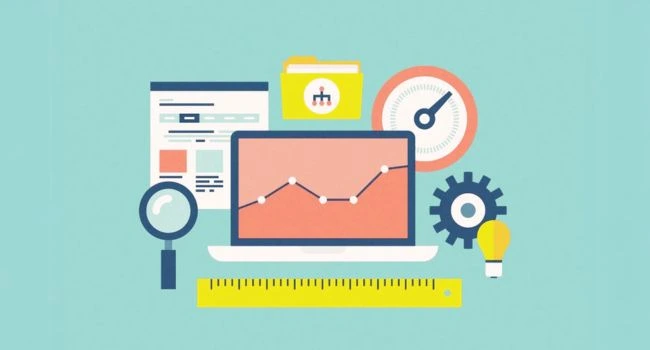
Marketing performance analysis helps you see what’s working. Dollar Shave Club is a good example; they matched their email tracking with customer loyalty goals, which increased their sales by 30%. As you connect your email goals to your business goals, you get better results. Small changes based on data can lead to big improvements in your business. If you want to sell more products, track how many people buy after reading your email and check how much money each email brings in.
Best Email Marketing Platforms for KPI Tracking
Choosing the appropriate email marketing platform enables you to monitor the effectiveness of your communications. You must ascertain whether your emails are read and clicked. HubSpot is an excellent tool for viewing specific email metrics. It also aids in automatically sending emails to the appropriate recipients. For those who are just starting out, Mailchimp is ideal. It displays your email results in dashboards that are simple to view.
Advanced users will benefit from Active Campaign. It facilitates sending distinct emails to various recipient groups. It also displays the revenue generated by your emails. The fact that these programs provide reports for you makes them crucial. This implies that you look at numbers less frequently. Alternatively, you may spend more time improving your emails. Improved emails that increase sales are the result of effective tracking.
Free Email ROI Calculator
Want to know if your emails are profitable? You can use free tools to calculate your email ROI, which stands for “return on investment.” Omni Calculator has a unique email ROI tool that’s simple to use—just enter your numbers, and it does the math for you. HubSpot also has an email marketing ROI calculator.
By simply entering the amount of money you spend on emails and the amount of money they generate, you can use these easy-to-use calculators to determine whether your email campaigns are worth the effort. This information will help you make informed decisions about your email marketing.
Email KPI Tracking Spreadsheet (Free Download)
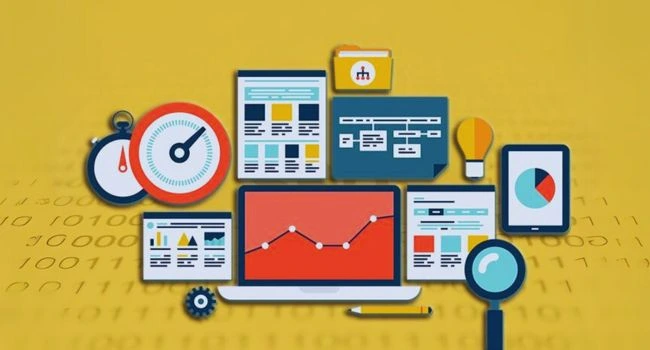
If you prefer to keep track of things yourself, we have a free spreadsheet that facilitates KPI tracking for your emails. KPI stands for “Key Performance Indicator,” and these are crucial figures that demonstrate how well your emails are performing. You can record how many people open your emails, click on links, unsubscribe from your list, and—most importantly—how many people make a purchase after reading your emails. KPI tracking helps you improve your emails over time, and this free spreadsheet makes it simple to see what is and isn’t working. Download it now to boost your email results!
Top AI-Powered Email Optimization Tools
Want to improve the functionality of your emails? Try email automation technologies that make use of artificial intelligence (AI). Your emails can benefit greatly from these tools. Writing better subject lines is made easier with Phrasee. More people will read your email if it has a catchy subject line. It is comparable to having a robot compose the ideal title for you.
Email automation tools save you time and make your emails work harder, allowing you to get better results without having to do all the work yourself. Optimove learns what each person likes and sends different emails to different people based on what they do on your website, increasing the likelihood that they will buy from you. Seventh Sense knows the best time to send emails. Some people check their emails in the morning, while others check them at night.
Conclusion
Email performance indicators help organizations determine if their messages function successfully. By researching these figures, companies can make better emails. These basic but vital tools unveil the secret to successful email marketing campaigns.
FAQs
What are the most important Email Marketing KPIs to track?
KPIs for email marketing let us know how well our emails are doing. We can see what people do with our emails from these unique numbers. Businesses may make better judgments regarding their email campaigns by monitoring these crucial indicators.
How do I calculate Email Marketing KPIs like Open Rate and CTR?
Knowing how to track click-through rates (CTRs) aids in evaluating the effectiveness of emails. These easy computations reveal whether or not your emails are being read and clicked. Learning these basic principles gives you important insights into how well your messages function with your audience.
Why is tracking KPIs important for Email Marketing?
Email marketing performance depends on watching the right numbers. These particular measurements tell you if your emails are operating well. Tracking these critical signs helps organizations generate better emails that customers actually want to open and read.
How can I improve my Email Marketing KPIs over time?
Email marketing optimization is the key to greater results. Your emails’ performance can be significantly improved by making little adjustments. Your key metrics will increase month after month if you test and refine your messages on a regular basis.
How often should I check my Email Marketing KPIs?
Checking your stats helps you identify issues right away. Successful email campaigns require frequent attention. Astute companies regularly review their email results to make sure they’re successfully communicating with their customers.

